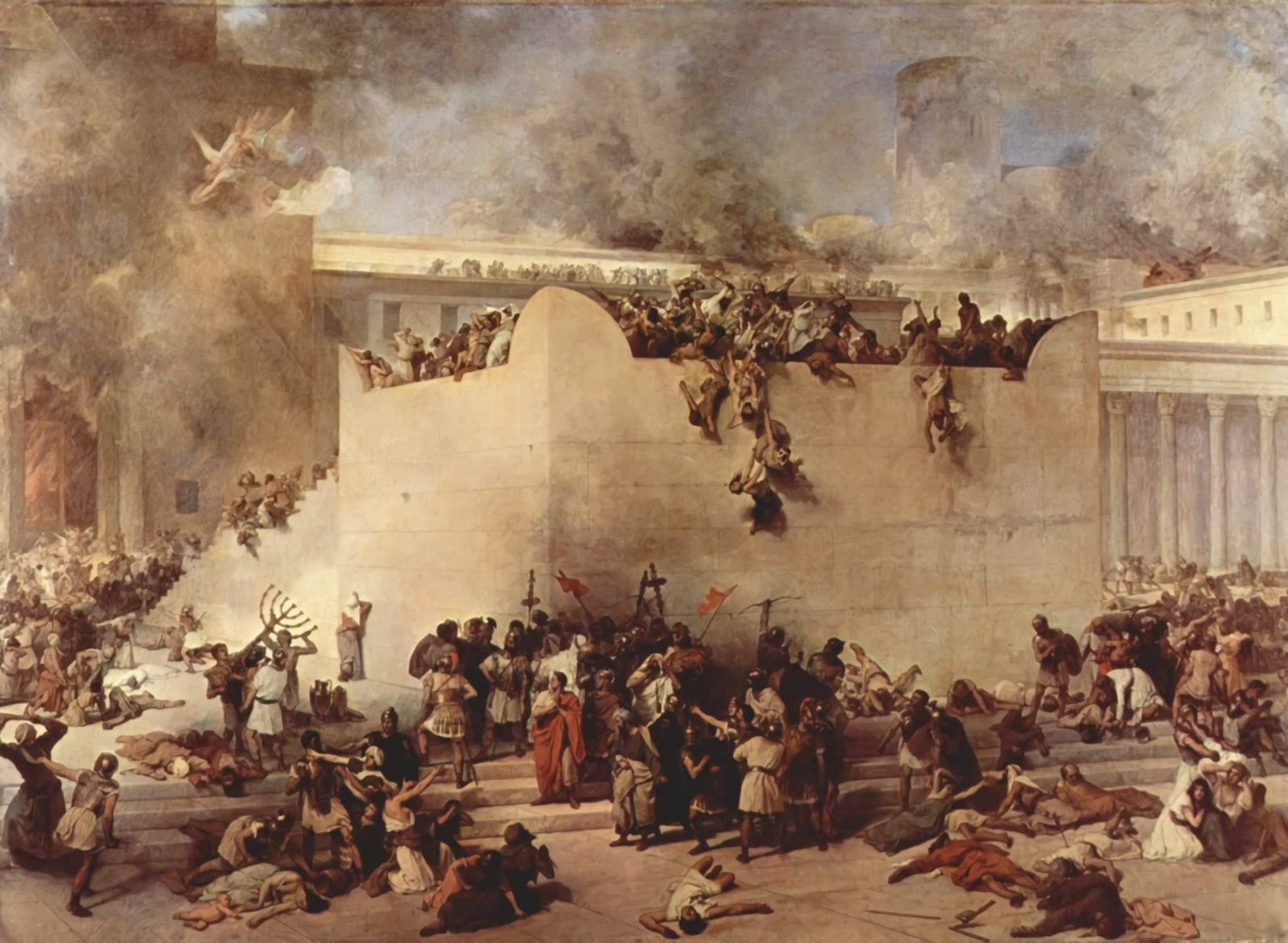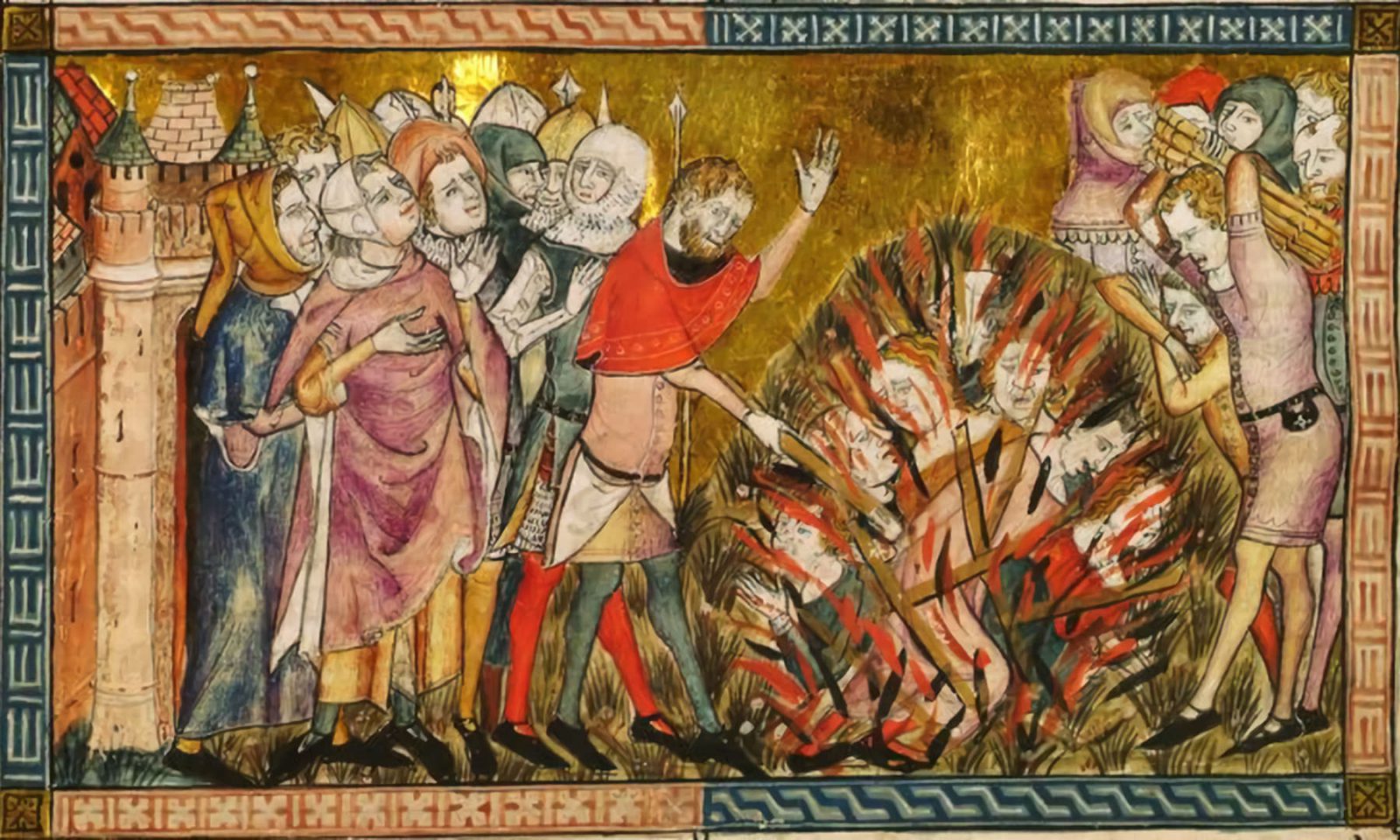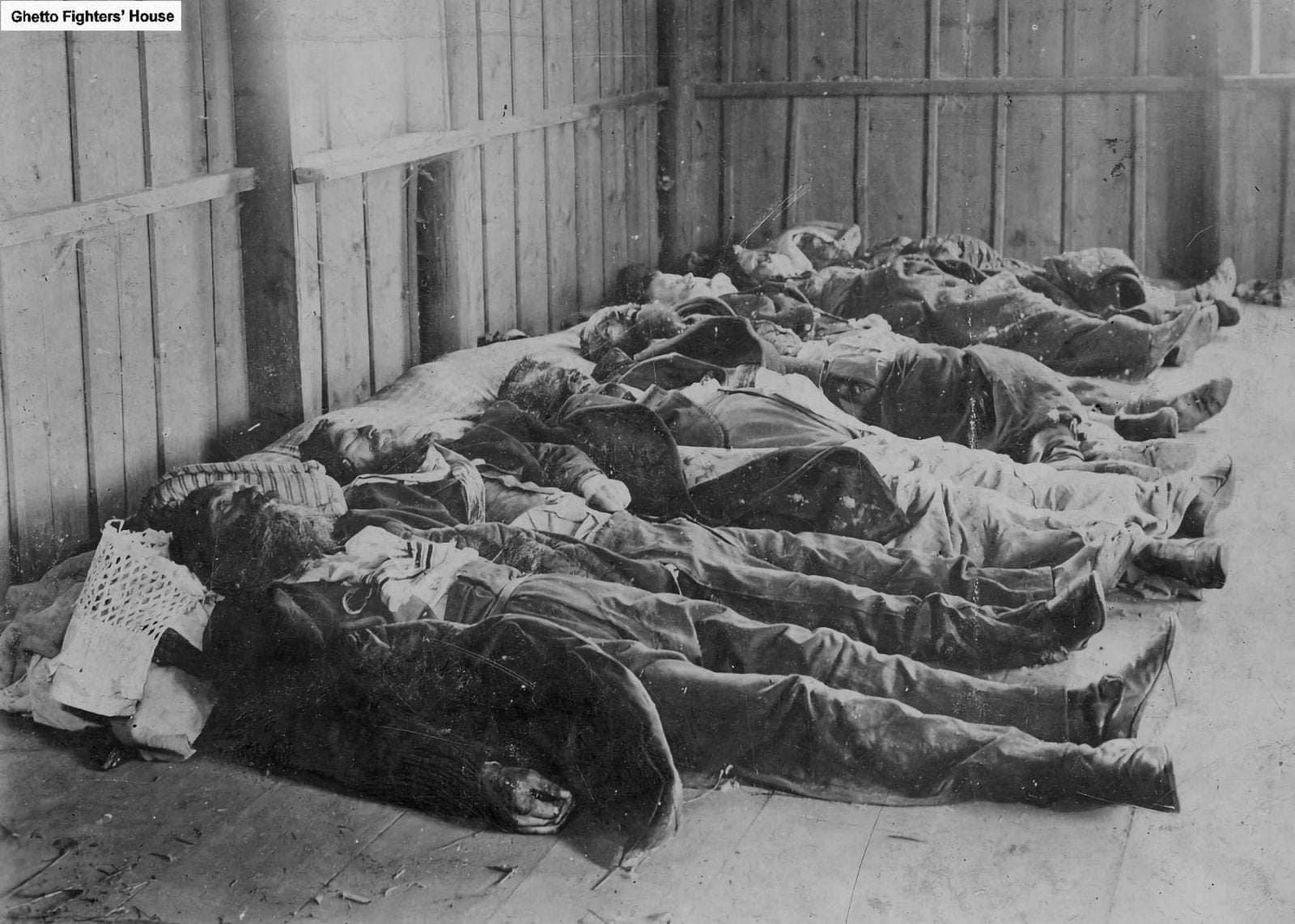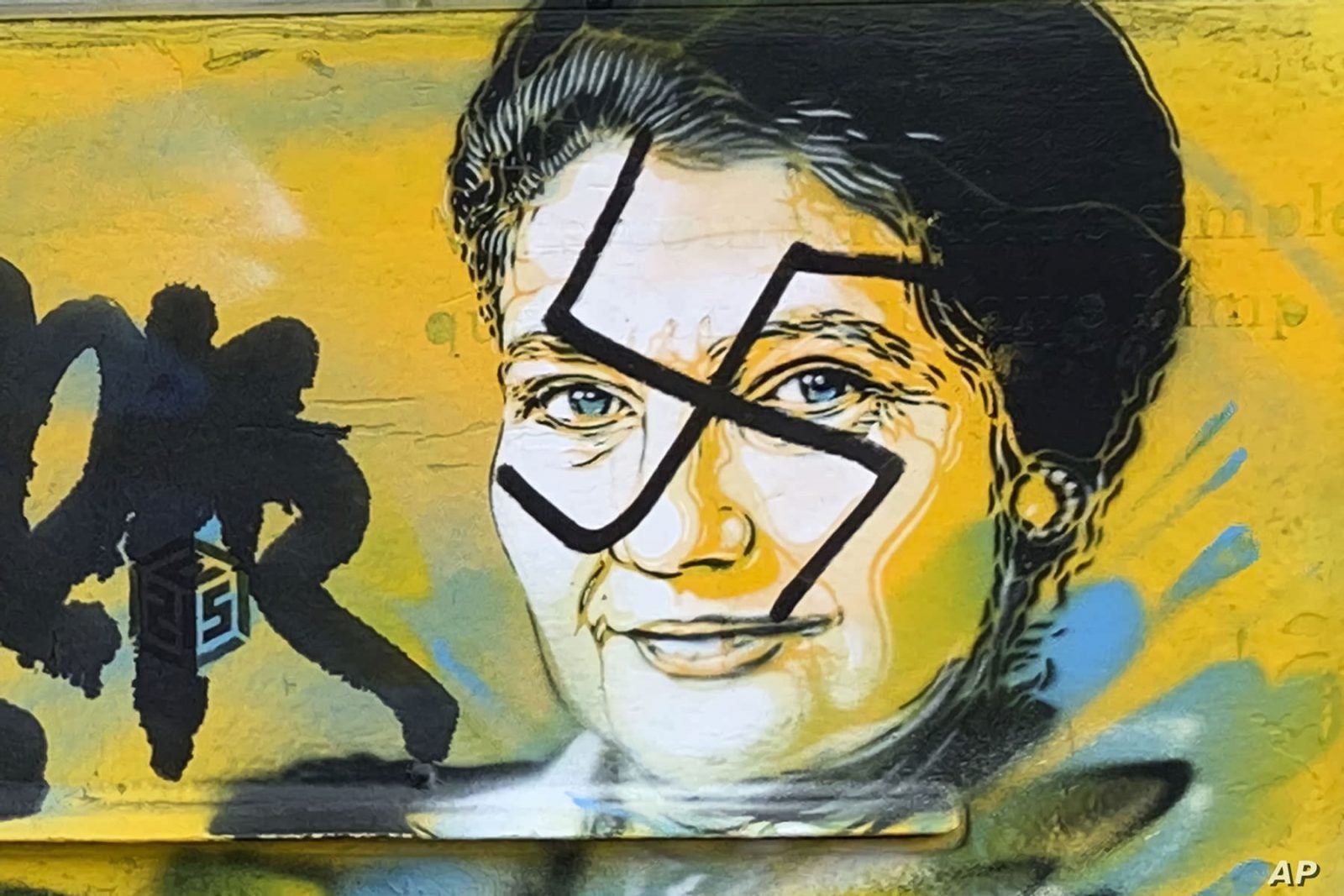History
Antisemitism in Global History
Antisemitism has reared its head in communities around the world with frightening persistence and intensity. In the wake of the October 7th Hamas attack on Israel, multiple countries have seen a tremendous rise in hate-driven cruelty toward the Jewish people.
According to CST, the British Jewish community’s security organization, from October 7-December 13, 2023, there were 2,093 antisemitic incidents across the United Kingdom, the highest total ever reported to CST across a 68-day period. 1https://cst.org.uk/news/blog/2023/12/13/antisemitic-incidents-13-december-update According to the Minister of the Interior in France, there were 1,242 antisemitic incidents from October 1-December 31, 2023, a 1000% increase compared to prior months. 2 https://www.leparisien.fr/societe/religions/les-actes-antisemites-en-hausse-de-1-000-depuis-les-attaques-du-hamas-24-01-2024-4ZRYBRT5AFBSRNXUEL6LPWFAWU.php And, according to the CONIB, which tracks antisemitism in Brazil, there was about a 1100% increase during the month of October in comparison to the previous year. 3https://www.conib.org.br/images/Relatorios_Gerais/infografico-antissemitismo-2023-eng.pdf
The incidents have targeted Jewish individuals and Jewish institutions, and incite the public to hate Jews. Following are just a few examples of each. In January 2024, in both London and Berlin, Jewish men were accosted on the street by unknown individuals, insulted with antisemitic slurs, and then punched in the face. 4https://www.standard.co.uk/news/crime/antisemitic-attack-london-hate-crime-met-police-jewish-man-punched-israel-gaza-b1134461.html 5https://www.juedische-allgemeine.de/politik/attacke-und-antisemitische-beleidigung-im-bus/ The Beth Jacob synagogue in Brazil was spray-painted with pro-Palestinian graffiti, and a Jewish-owned grocery store in Toronto was set on fire and spray-painted with the words “Free Palestine.”6https://twitter.com/StandwithusBr/status/1742679706313359635 7https://www.cbc.ca/news/canada/toronto/ont-toronto-hate-investigation-1.7074656 “A good Jew is a dead Jew” and “Death to Jews” and swastikas were painted on a kindergarten wall in Strasbourg, France. 8https://twitter.com/PJakubowicz/status/1720355517388726769
Although anti-Jewish hatred can be traced all the way back to the ancient world, the word “antisemitism” is a modern invention that emerged in the wake of rising European nationalism. German journalist Wilhelm Marr coined the term with his founding of the League of Antisemites (Antisemiten-Liga) in 1879.9Jehuda Reinharz and Paul Mendes-Flohr, Jew in the Modern World, Third edition, (Oxford University Press, 2010), 333n1.
Today, Marr often is called the “father of antisemitism,” not only for inventing a name, but for clarifying the crazed logic behind hatred toward Jews — that being Jewish is not just a matter of ancestry, culture or faith; it’s a disqualification from friendship, citizenship and, as it would become clear decades later, also humanity. For the antisemite, Jews are a special category, a foil, a scapegoat.
For the antisemite, Jews are a special category, a foil, a scapegoat.
How did it come to this?
For centuries before the term “antisemitism” emerged, Jews were persecuted as a minority group whose loyalties were questioned by polytheistic and, later, Christian and Islamic regimes. Though some ancient societies admired Jewish solidarity, ethics and monotheism, Jews often paid a terrible price for their religious difference and statelessness, as well as for their economic successes, which induced bafflement, envy and outrage among masses of people who felt themselves more deserving.10Philip A. Cunningham, “Jews and Christians from the Time of Christ to Constantine’s Reign,” in Albert S. Lindemann and Richard S. Levy, Antisemitism: A History (Oxford University Press, 2010), 48. From Athens to Alexandria, Rome to Persia, Jews provoked resentment and suspicion, making them a convenient and frequent scapegoat.
In many contexts, Jewish laws and customs were misconstrued as indications of Jews’ inherent hatred of non-Jews. Ancient Egyptian texts refashioned the Exodus story to dehumanize Jews, depicting them as a misguided and sickly group of outcasts who practiced cannibalism and human sacrifice, rejected the “legitimate” gods of civilized society and were expelled, rather than freed, from Egypt. Ancient Greek and Roman literature condemned Jews as cowards and madmen who allegedly failed to contribute enough to civilization, separated themselves from political and social life and practiced bizarre customs, such as dietary laws and circumcision.11Benjamin Isaac, “The Ancient Mediterranean and the Pre-Christian Era,” in Albert S. Lindemann and Richard S. Levy, Antisemitism: A History (Oxford University Press, 2010), 35-37. While the Roman Empire permitted Judaism, the ruling class openly despised Jews for (among other offenses) refusing to acknowledge the emperor’s divinity. Roman commentators condemned Jews’ belief in a singular, “jealous” god and viewed Jews as more loyal to their ancestral homeland of Judea than they were to Roman rule.
 Valentin de Boulogne (prob.), Saint Paul Writing His Epistles (c. 1618–1620), oil on canvas, Museum of Fine Arts, Houston, Texas. https://commons.wikimedia.org/wiki/File:Probably_Valentin_de_Boulogne_-_Saint_Paul_Writing_His_Epistles_-_Google_Art_Project.jpg
Valentin de Boulogne (prob.), Saint Paul Writing His Epistles (c. 1618–1620), oil on canvas, Museum of Fine Arts, Houston, Texas. https://commons.wikimedia.org/wiki/File:Probably_Valentin_de_Boulogne_-_Saint_Paul_Writing_His_Epistles_-_Google_Art_Project.jpgIn the years following Jesus’ death, the earliest Christian writings starkly defined proto-Christian congregations against those of Jews who did not believe in Jesus’ divinity by painting traditional Judaism in a negative light. Writings of Paul the Apostle, for example, would later support negative caricatures of Judaism as heartless, outdated and excessively focused on strict laws.12Philip A. Cunningham, “Jews and Christians from the Time of Christ to Constantine’s Reign,” in Albert S. Lindemann and Richard S. Levy, Antisemitism: A History (Oxford University Press, 2010), 51-52.
Following a Jewish revolt against Roman domination, the Romans destroyed the Jewish Temple in Jerusalem in 70 CE, permanently and dramatically rupturing and fragmenting Jews’ religious, political and collective social existence.
The Christian Gospels were composed in this context of great change and shifting social boundaries.13Philip A. Cunningham, “Jews and Christians from the Time of Christ to Constantine’s Reign,” in Albert S. Lindemann and Richard S. Levy, Antisemitism: A History (Oxford University Press, 2010), 52-53. Large numbers of non-Jews joined the new Christian communities and brought with them long-held ambivalence about traditional Jewish laws and customs, as described above. While the Romans had sentenced and crucified Jesus, Christians could not openly foster hatred toward the Romans, because they were still subjects of the Roman empire, vulnerable to Roman power and dependent on Roman favor. The Gospels thus envisioned the Jewish Temple leadership, an already unpopular class among Jews of the first century, as the primary actors responsible for the crucifixion. Despite the fact that Jesus and his initial followers were all Jews, some Christian theologians and Church Fathers solidified this narrative that demonized “the Jews.” For millennia, the notion of Jews as backward, heartless “Christ-killers” would encourage and excuse countless antisemitic atrocities.14Marvin Perry and Frederick M. Schweitzer, eds., Antisemitic Myths: A Historical and Contemporary Anthology (Bloomington: Indiana University Press, 2008), 2; Philip A. Cunningham, “Jews and Christians from the Time of Christ to Constantine’s Reign,” in Albert S. Lindemann and Richard S. Levy, Antisemitism: A History (Oxford University Press, 2010), 55.

Roman Empire
At first, early Christians of the Roman Empire were more subjugated and despised than were Jews. But Christianity grew and gradually became dominant, following Emperor Constantine’s conversion in the year 312 and Emperor Theodosius’ decision in 380 to make Christianity the Empire’s official religion. The Christian Church earned imperial patronage and unprecedented influence as church merged with state. With this merger, anti-Jewish beliefs became dangerously institutionalized in wider legal systems. Christian attacks on Jewish synagogues increased significantly in the fourth and fifth centuries, and Christian leaders supported laws to restrict the freedoms of Jewish rivals.15Philip A. Cunningham, “Jews and Christians from the Time of Christ to Constantine’s Reign,” in Albert S. Lindemann and Richard S. Levy, Antisemitism: A History (Oxford University Press, 2010), 57-60. Across the Christian Roman Empire, Jews became second-class subjects. They were not allowed to marry Christians, employ Christians or appear as witnesses against Christians in court. Anti-Jewish hostility became a cultural norm sanctioned by emperors and bishops who described the Jews as blind to the truths of the empire’s privileged religion.16Benjamin Isaac, “The Ancient Mediterranean and the Pre-Christian Era,” in Albert S. Lindemann and Richard S. Levy, Antisemitism: A History (Oxford University Press, 2010), 38-40. In some regions, Jews were later forbidden from owning land or holding positions in government. For centuries, a vicious cycle would transpire: official discrimination against Jews appeared to be justified by the common anti-Jewish bigotry and superstition that such discrimination actually emboldened.
Islamic World
In the Islamic world, Jews lived relatively well for centuries. Unlike the New Testament, the Quran contains both negative and positive depictions of its Jewish roots. Islamic scripture, such as the Hadith and hagiographic texts, sometimes describes Jews and Christians as misguided, with particular emphasis on perceptions of Jews as malicious and deceitful. But Muslims also respected Jews and Christians as “People of the Book,” and early Islamic regimes tended to grant them a measure of protected status, dhimmi, which offered legal recognition of religious practice.17Norman A. Stillman, “Anti-Judaism and Antisemitism in the Arab World Prior to 1948,” in Albert S. Lindemann and Richard S. Levy, Antisemitism: A History (Oxford University Press, 2010), 212-214. Since only Muslim males were given the highest social position, however, the status of Jews and Christians was, in some regards, a limited and subjugated one. There was a special tax on them as non-Muslims, and they were sometimes compelled to wear distinctive hats or other items of clothing to distinguish them from the Muslim majority. Nevertheless, Jews in Islamic lands enjoyed a generally more favorable existence in the medieval and early modern world than did most of their counterparts under Christendom.
 Photographer unknown, Statue of Rabbi Moshe ben Maimon (Maimonides) by the sculptor Amadeo Ruiz Olmos, Cordoba, Spain (date unknown), photo, Alamy Stock Photos https://www.alamy.com/maimonides-moses-ben-maimon-crodoba-1135-cairo-1204-philosopher-and-physician-with-great-prestige-in-the-hebrew-communities-of-his-time-for-his-great-works-guide-of-the-perplexed-aphorisms-and-treaty-of-dietetics-and-hygiene-statue-of-maimonides-in-the-neighborhood-of-the-jewish-quarter-detail-cordova-andalusia-spain-image220316742.html
Photographer unknown, Statue of Rabbi Moshe ben Maimon (Maimonides) by the sculptor Amadeo Ruiz Olmos, Cordoba, Spain (date unknown), photo, Alamy Stock Photos https://www.alamy.com/maimonides-moses-ben-maimon-crodoba-1135-cairo-1204-philosopher-and-physician-with-great-prestige-in-the-hebrew-communities-of-his-time-for-his-great-works-guide-of-the-perplexed-aphorisms-and-treaty-of-dietetics-and-hygiene-statue-of-maimonides-in-the-neighborhood-of-the-jewish-quarter-detail-cordova-andalusia-spain-image220316742.htmlIn Islamic Spain, despite some periods of persecution, Jews flourished and made major advances in science and medicine, poetry and philosophy. They enjoyed much legal and religious autonomy and lived side by side with Muslims as integrated members of society.18Jon Efron, The Jews: A History (Pearson, 2009),136. However, as Christian forces invaded at the turn of the millennium, Almoravid Muslims, who came to defend against the Christian armies, introduced a religious zeal that embittered Iberian Muslims’ relations with Jews.19Jon Efron, The Jews: A History (Pearson, 2009), 128-129. The following centuries would see an increase in propaganda texts against non-Muslims throughout the Islamic world, especially under Mamluk rule in Egypt and Syria (1250-1517). One text, al-Wasiti’s Radd alā Ahl al-Dhimma, wrongly asserted that 12th century Spanish Jewish philosopher, jurist and physician Moses Maimonides had sanctioned Jews’ use of non-Jews’ blood, a falsity echoed in other Islamic handbooks of the period.20Norman A. Stillman, “Anti-Judaism and Antisemitism in the Arab World Prior to 1948,” in Albert S. Lindemann and Richard S. Levy, Antisemitism: A History (Oxford University Press, 2010), 216.

Medieval Christendom
Further west, Jewish life within medieval Christendom varied widely across contexts and eras, with Jews both prospering and experiencing severe discrimination and violent persecution.21Jon Efron, The Jews: A History (Pearson, 2009), 147. Barred from most professions and guilds in Western and Central Europe, medieval European Jews in those lands often worked on the margins of the economy by default. Many resorted to trade, when permitted, and to high-interest crediting because the Church had designated the application of interest-based loans as a sin for Christians, so rulers generally relegated this role to Jews, sometimes forcing it on them. As much as the Church demonized moneylending, it came to rely on it, as did many economically developing towns and cities.22Jon Efron, The Jews: A History (Pearson, 2009), 154. As financiers and tax collectors, Jews often served as middlemen between noble and peasant classes. In time, the application of interest itself became a derogatory trope, with Jews commonly stereotyped as cheap, greedy, exploitative or “good with money.” Medieval rulers thus came to equate Jews with financial skills, sometimes inviting Jews to settle in particular lands under a protected minority status in exchange for service as tax collectors or bankers, roles hated by the peasantry, but needed for financial progress in expanding economies.
Several medieval popes strove to protect Jews’ physical safety, declaring that Jews were meant to be kept alive in a state of misery as a living testament to the truths of Christianity and its rightful triumph over Judaism.23Marvin Perry and Frederick M. Schweitzer, eds., Antisemitic Myths: A Historical and Contemporary Anthology (Bloomington: Indiana University Press, 2008), 3. Organized violence against Jewish communities was thus minimal in the first centuries of medieval Christendom. But Jews still were subject to the whims of their rulers, who sometimes forced conversions, demanded funds or expelled them for various reasons. And localized anti-Jewish hostility occurred sporadically at the hands of the masses during expressions of religious fervor, economic decline or political uncertainty. Jews elicited anger and envy as outsiders protected by the ruling powers, especially given the despised professions into which Jews were often ushered by those rulers.
 Artist unknown (circa 1300-1340), illustration, Codex Manesse https://www.publicmedievalist.com/tale-two-europes-jews-medieval-world/
Artist unknown (circa 1300-1340), illustration, Codex Manesse https://www.publicmedievalist.com/tale-two-europes-jews-medieval-world/Medieval Christians persistently understood Jews as demonic “Christ-killers,” even imagining horns and tails on their bodies. Such beliefs accompanied the First Crusade, in which Christian zealots led massacres of Jews by the hundreds in parts of Europe and the Middle East. Rumors also spread that Jewish men menstruated and needed Christian blood to cure this ailment, as well as for use in Passover rituals. When a Christian went missing, Jews were repeatedly accused of having kidnapped the missing person for ritual use of their blood. Known as the blood libel, this accusation spurred the unjust pillaging, torture, killing and expulsion of countless European Jews.24Jon Efron, The Jews: A History (Pearson, 2009), 152; Marvin Perry and Frederick M. Schweitzer, eds., Antisemitic Myths: A Historical and Contemporary Anthology (Bloomington: Indiana University Press, 2008), 3. By the 13th century, the Church required Jews in some contexts to wear special hats or badges to mark their degraded status when appearing in public.25Marvin Perry and Frederick M. Schweitzer, eds., Antisemitic Myths: A Historical and Contemporary Anthology (Bloomington: Indiana University Press, 2008), 3. When the Bubonic Plague struck Europe during the 14th century, Jews were suspected of poisoning wells. Despite the protective efforts of Pope Clement VI and other Christian rulers, tens of thousands of Jews were burned alive under such accusations.26Jon Efron, The Jews: A History (Pearson, 2009), 153. By the 16th century, the Italian peninsula and some German-speaking towns forcibly segregated Jewish residents within specific parts of town — areas that would come to be known as ghettos long before the term reemerged during World War II.
 Cranach the Elder, Lucas, Martin Luther (1529), oil painting, Deutsches Historisches Museum, Berlin http://lucascranach.org/DE_LHW_G16 https://www.npr.org/2016/11/20/502437123/how-technology-helped-martin-luther-change-christianity
Cranach the Elder, Lucas, Martin Luther (1529), oil painting, Deutsches Historisches Museum, Berlin http://lucascranach.org/DE_LHW_G16 https://www.npr.org/2016/11/20/502437123/how-technology-helped-martin-luther-change-christianityMedieval Christians also directly attacked Judaism as a religion. In the 12th century, authorities confiscated and burnt countless copies of the Jewish Talmud, and Franciscan and Dominican preachers assaulted Jews with forced conversions on the grounds of Judaism’s connection to that text.27Marvin Perry and Frederick M. Schweitzer, eds., Antisemitic Myths: A Historical and Contemporary Anthology (Bloomington: Indiana University Press, 2008), 3-4. The Catholic Church led the way with anti-Judaism practices, but the Protestant Reformation invigorated new streams of it. Martin Luther spearheaded a new vision of Christian faith, but energetically advanced old antisemitic beliefs when Jews refused to leave Judaism and convert to his new vision. In his later writings, Luther lobbied for the burning of synagogues and destruction of Jewish homes, the confiscation of the Talmud and Jewish prayer books, for restrictions on Jewish freedom of travel and for the expulsion of Jews from Saxony and other German territories. His followers held antisemitic riots and looted synagogues, and Jews would be expelled from several Lutheran states in the 1580s. Luther’s treatises against the Jews would be reprinted for centuries. Most of the antisemitic books later published in Nazi Germany would quote them, relying on Luther’s 16th-century condemnation of the Jews.28Jon Efron, The Jews: A History (Pearson, 2009), 201-202; Stephen W. Eldridge, “Ideological Incompatibility: The Forced Fusion of Nazism and Protestant Theology and its Impact on Anti-Semitism in the Third Reich,” International Social Science Review, vol. 81, no. 3/4 (2006): 151–165.
Since the 13th century, Jews had been repeatedly subjected to forced conversions, expropriations and massacres in Central and Western Europe. They also were continuously expelled from different regions, including England in 1290, France in 1394 and Spain in 1492, following the Spanish Inquisition and preceding massacres of Spanish Jews by the thousands. By the end of the Middle Ages, anti-Jewish violence and expulsions virtually had eradicated all Jewish communities from Western Europe.29Marvin Perry and Frederick M. Schweitzer, eds., Antisemitic Myths: A Historical and Contemporary Anthology (Bloomington: Indiana University Press, 2008), 4. Expulsions would continue into the modern period, as well, with province-wide expulsions of Russian Jews during World War I.30YIVO Encyclopedia of Jews in Eastern Europe, “Pogroms,” https://yivoencyclopedia.org/article.aspx/Pogroms. In fact, more Jews would be expelled from Europe and Arab lands between 1865-1965 than in all of the previously recorded history put together.31Jonathan D. Sarna, When General Grant Expelled the Jews (Schocken, 2012), 34, 168 n.15.

18th and 19th Century Europe
During the Enlightenment, hierarchical feudal systems transitioned into states based on the ideals of citizenship. An increased emphasis on reason, tolerance and individual liberty, as well as the separation of church and state, led most Western and Central European states to grant citizenship and civil rights to Jews during this time. For the first time in centuries, Jews in many countries were allowed to live wherever they wanted, enroll in higher education and work in the liberal professions. Some Jews renounced religion and entered society as secular individuals.
 Statue (19th century), U.S. Holocaust Museum, The Katz Ehrenthal Collection https://www.ushmm.org/collections/the-museums-collections/collections-highlights/500-years-of-antisemitic-propaganda-the-katz-ehrenthal-collection
Statue (19th century), U.S. Holocaust Museum, The Katz Ehrenthal Collection https://www.ushmm.org/collections/the-museums-collections/collections-highlights/500-years-of-antisemitic-propaganda-the-katz-ehrenthal-collectionRooted in a heritage that prized literacy and education, as well as leadership and social ethics, many emancipated Jews sought to prove themselves worthy of their new legal freedom, to show gratitude through social contribution, to fulfill aspirations of professional and cultural excellence and to establish social securities unavailable in the centuries preceding emancipation. The subsequent prominence of European Jews in such fields as business, finance, law, science, academia and the arts was perhaps most palpable in Germany of the 1870s.32Marvin Perry and Frederick M. Schweitzer, eds., Antisemitic Myths: A Historical and Contemporary Anthology (Bloomington: Indiana University Press, 2008), 104-105. As such Jews climbed socio-economic ladders, however, Western and Central European Christians evaluated Jews anew, never having discarded the centuries-old religious antisemitism and now faced with the prospect of legal equality and even competition with them. Antisemites like political theorist Wilhelm Marr cultivated Social Darwinist ideas about race, solidifying notions of “whiteness” and classifying Jews as more “Asiatic” than European or “white.” Jewishness was theorized as a biological, rather than religious, matter. On such racial grounds, anti-Jewish conspiracy theories and propaganda caricatured Jews as grotesque and evil exploiters of German Christians. Blaming Jews for economic crises became a staple of political life in Germany and other parts of democratic Europe.
 Roger-Viollet, H., Alfred Dreyfus (before 1894), photo, Roger-Viollet Agency https://www.roger-viollet.fr/en/asset/fullTextSearch/page/1/search/dreyfus/filtered/1#nb-result https://www.britannica.com/biography/Alfred-Dreyfus
Roger-Viollet, H., Alfred Dreyfus (before 1894), photo, Roger-Viollet Agency https://www.roger-viollet.fr/en/asset/fullTextSearch/page/1/search/dreyfus/filtered/1#nb-result https://www.britannica.com/biography/Alfred-DreyfusAs nations determined which groups to include or exclude within their boundaries and collective cultures, antisemitism became increasingly salient in public matters. A particularly polarizing case occurred at the end of the 19th century in France. At this time, a series of factors — economic crisis, the collapse of some banks and growing disaffection with modernism and urbanization — assumed an antisemitic tone. This played out on the public stage in 1894 when forged documents were used to accuse, court-martial and imprison a Jewish French Army captain named Alfred Dreyfus under false charges of selling military secrets to the Germans. Despite proof of the forgery, efforts to bring justice to Dreyfus were met with antisemitic rioting, exacerbated by a growing and increasingly active popular press that circulated racialized anti-Jewish caricatures and rhetoric. Despite the evidence, Dreyfus would not be released and readmitted to the army until 1906.33Richard S. Golsan, “Antisemitism in Modern France: Dreyfus, Vichy, and Beyond,” in Albert S. Lindemann and Richard S. Levy, Antisemitism: A History (Oxford University Press, 2010), 144-145. The scandal, a textbook example of antisemitic scapegoating, came to be known as the Dreyfus Affair.
Dreyfus Affair and “The Jewish Question”
The sort of rhetoric that fueled the Dreyfus Affair had a direct impact on other parts of the world, including the Middle East. Christian Syrians spread ideas adopted from contact with French traders and missionaries who had colonized the region. By the 20th century, the Arab world would increasingly associate Judaism with Zionism34Zionism is the movement for Jewish self-determination and statehood. For more, see Myth #7., and slander Zionism with antisemitic conspiracy theories.
By this point in history, fueled by multiple streams of theological vitriol and self-perpetuating waves of social prejudice, much of the world had come to view Jews as an inherently problematic category of people and had come to speak of “The Jewish Problem,” or “The Jewish Question.” Uniting disparate populations through a perceived common enemy, “The Jewish Question” expressed dissatisfaction with perceived “essential” Jewish cultural differences from the non-Jewish majority. It strictly evaluated how well Jews acculturated into often-hostile societies that had demonized Jews for centuries. It condemned Jews for not yet disappearing as a distinct peoplehood.35Jehuda Reinharz and Paul Mendes-Flohr, Jew in the Modern World, Third edition, (Oxford University Press, 2010).
Marr was among the most prominent voices to racialize “The Jewish Question” during this time, speaking to the dangerous Social Darwinist notions that circulated around him. He condemned Jews as enemies of the state — not merely a different religion, but an alien race.36Marvin Perry and Frederick M. Schweitzer, eds., Antisemitic Myths: A Historical and Contemporary Anthology (Bloomington: Indiana University Press, 2008), 104-105. Marr blamed the “Jewish race” for the liberal, humanist ideas of the Enlightenment, as well as for the forces of urbanization and capitalism that had brought such dramatic change to Germany as well as other parts of Europe. Connecting Jews with “Asiatic” races, Marr also intensified public associations between Jews and the foreign peoples of Eastern Europe, provoking xenophobia.
Many Jews did indeed reside in Eastern Europe, having found safety and security there throughout much of the early modern period. Jews there were, nevertheless, also targeted for violence during moments of upheaval. In a context of shifting borders and political uncertainty, locals in tsarist Russia, for example, periodically led pogroms, forms of mob violence that included the looting and destruction of Jewish property and sometimes physical attacks on Jews with little or no intervention from state authorities. In 1881, Jewish property was destroyed in a wave of over two hundred and fifty pogroms throughout the southwestern provinces of the Russian Empire, leading to an increase in Jewish nationalist activity.37YIVO Encyclopedia of Jews in Eastern Europe, “Pogroms,” https://yivoencyclopedia.org/article.aspx/Pogroms. During the 1905-1907 Revolution in Russia, Russian loyalists targeted Jews, killing hundreds of them in Odessa and Kiev.

Post-1917 and The Protocols of the Elders of Zion
The aftermath of the 1917 Bolshevik Revolution in Russia also led many to paint the threats of communism as a worldwide Jewish conspiracy, despite the fact that only a tiny minority of Jews in Europe and the Americas sympathized with communism. As Eastern and Central European empires collapsed, nationalists and peasants took out their profound uncertainty and rage on the Jewish “other” in their midst. Unprecedented in scale, over a thousand pogroms between 1918 and 1921 occurred in over five hundred Jewish communities, and took the lives of some 100,000 Jews.38Jeffrey Veidlinger, Pogroms and the Collapse of Empire. Ann Arbor, MI: Michigan Publishing, University of Michigan Library, 2015; YIVO Encyclopedia of Jews in Eastern Europe, “Pogroms,” https://yivoencyclopedia.org/article.aspx/Pogroms. The misguided belief that Jews were to blame for the plight of all sides in situations of political chaos would be used to justify the antisemitic activities of fascists in Eastern and Central Europe in the 1930s.39YIVO Encyclopedia of Jews in Eastern Europe, “Russian Revolutions of 1917,” https://yivoencyclopedia.org/article.aspx/Russian_Revolutions_of_1917.
 Protocols of the Elders of Zion (1934 edition), digital image of book cover, University of Chicago https://www.lib.uchicago.edu/media/images/ros450E-35.original.jpg
Protocols of the Elders of Zion (1934 edition), digital image of book cover, University of Chicago https://www.lib.uchicago.edu/media/images/ros450E-35.original.jpgAmong the propaganda inspiring anti-Jewish violence in this context was a forged pamphlet entitled The Protocols of the Elders of Zion. Created by Russian secret police in Paris in the late 1890s, the tract supposedly revealed the minutes from a secret meeting of Jewish elders who were plotting world domination through the combined control of capitalism, liberalism, Marxism, anarchism and parliamentary democracy. More than anything, it gave greater prominence to preexisting antisemitic beliefs by placing them in a contemporary context. Additionally, the 1917 Russian Revolution and Germany’s defeat in World War I lent special power to The Protocols, as desperate reactionaries sought to prove a Jewish-Bolshevik conspiracy to overthrow Russia, Germany or even the entire world. Many also mistakenly perceived the growing Zionist movement as confirmation of The Protocols’ lies.
By the early 1920s, Arab nationalists in Palestine and Iraq also cited the book. It remains a bestseller in fringe circles and in much of the Muslim world more than 100 years after its publication.40Jon Efron, The Jews: A History (Pearson, 2009), 313; Norman A. Stillman, “Anti-Judaism and Antisemitism in the Arab World Prior to 1948,” in Albert S. Lindemann and Richard S. Levy, Antisemitism: A History (Oxford University Press, 2010), 218-219. In the United States, automobile mogul Henry Ford published a series of antisemitic articles based on The Protocols in his newspaper, The Dearborn Independent.41Leonard Dinnerstein, Antisemitism in America (New York: Oxford University Press, 1994), 81.
19th- and 20th-Century Central and Western Europe
In contrast to Eastern Europe, where Jews more often remained oppressed through much of the 19th and 20th centuries, Central and Western Europe saw many prosperous and socially celebrated Jews by the interwar years. In Austria, Germany and elsewhere, Jews participated in “high culture” and contributed to the arts and sciences. Jews were proud citizens of the European nations, fighting and dying in wars alongside their non-Jewish compatriots. However, Germany’s economic crash after World War I had given new and dangerous cultural power to anti-Jewish stereotypes. Moreover, the newly visible population of impoverished Eastern European Orthodox Jewish refugees from the war front seemed, for many, to confirm Marr’s xenophobic and racializing association between Jews and Easterners. As Germany struggled to rebuild itself amidst heavy reparations, economic turmoil and the disdain of the international community, the Jews served as a useful scapegoat to those seeking an explanation for the nation’s woes. The centuries-old demonization of Jews as a duplicitous people aspiring to financially deplete and physically harm Christians appealed to those bent on blaming a perceived “other” for their predicament and reviving the imagined strength and unity of medieval times.
 Vachet, R., Revolution Nationale (1940-1942), poster, public domain https://www.smithsonianmag.com/history/vichy-government-france-world-war-ii-willingly-collaborated-nazis-180967160/
Vachet, R., Revolution Nationale (1940-1942), poster, public domain https://www.smithsonianmag.com/history/vichy-government-france-world-war-ii-willingly-collaborated-nazis-180967160/World War II
In 1933, Adolf Hitler was elected to office and began his path to power. His political platform combined fascism with fantasies of racial purity. Between 1941-1945, the Nazi regime and its allies conducted the deliberate and systematic slaughter of six million Jewish civilians across much of Europe and parts of North Africa, an unprecedented transnational campaign of genocide. The Nazi regime also selected other groups for wholesale murder, including the Sinti and Roma peoples, Soviet POWs, the mentally ill and the physically disabled. It also persecuted and murdered political and religious dissidents, homosexuals and others in staggering numbers. Yet, through a dangerous racial logic, Jews occupied a special place in Nazi ideology as its greatest perceived threat.42David Engel, The Holocaust and the Third Reich (Pearson, 2013), 5.
 Rehak, Bruno, Jud Suss (1940), poster, Germany, Facing History and Ourselves Resource Library https://www.facinghistory.org/resource-library/image/poster-propaganda-film-jud-s-ss
Rehak, Bruno, Jud Suss (1940), poster, Germany, Facing History and Ourselves Resource Library https://www.facinghistory.org/resource-library/image/poster-propaganda-film-jud-s-ssAs early as the 1930s, ties between the Arab world and the Third Reich had solidified Arab elites’ exposure to Nazi discourse. Hitler’s manifesto, Mein Kampf, was translated into Arabic and published in Beirut in 1935, and soon made available across the Middle East and North Africa, usually with its anti-Arab passages removed. Pan-Islamic and Pan-Arabic paramilitary groups admired and drew from fascist examples in Europe, sometimes adopting antisemitic rhetoric.43Kenneth L. Marcus, The Definition of Anti-Semitism (Oxford University Press, 2015), 101. In 1941, for example, a pro-Nazi regime emerged in Iraq, officially allied with the Axis powers, and declared Iraq’s Jewish population enemies. Not long after, a two-day pogrom committed by Arab locals against the Jews of Baghdad left 179 Jews dead and 242 Jewish children orphaned.44Norman A. Stillman, “Anti-Judaism and Antisemitism in the Arab World Prior to 1948,” in Albert S. Lindemann and Richard S. Levy, Antisemitism: A History (Oxford University Press, 2010), 216-220.

Post-World War II
After the Holocaust, Jewish survivors met hostility from many of their non-Jewish neighbors in Europe when returning to their hometowns after the war. About 1,500 Jews were killed in pogroms in postwar Poland, the largest occurring in Kielce in 1946, in which about 50 Jews were murdered by a Polish mob that included policemen and soldiers.45Jon Efron, The Jews: A History (Pearson, 2009), 433. By 1949, over 100 postwar cases of anti-Jewish vandalism were registered in Germany, including the damaging of Jewish cemeteries, synagogues, cars and homes.46Michael Brenner, After the Holocaust (Princeton University Press, 1997), 52. For many Jewish survivors of World War II, Israel, America and Australia became the most feasible options for rebuilding their lives in safety.
The antisemitism that pervaded the Holocaust and its global aftermath reached historically unique proportions that, for some, may seem distant from today’s realities, but the harmful ideas that fueled it continue to persist and fester. Though Nazi race theory was widely condemned in many parts of the postwar world, antisemitism and anti-Zionism continued to be employed by Soviet officials and Arab extremists.
In 1947, for example, the Arab League — which at that time included Egypt, Iraq, Jordan, Lebanon, Saudi Arabia, Syria, and Yemen — drafted a law to freeze the bank accounts of all Jews in Arab states in order to finance anti-Zionist resistance, as well as to intern and confiscate the assets of all Jews suspected of active Zionism. Jewish life in these regions became even less safe after the creation of the State of Israel the following year, which heightened antisemitism in the region. Over the next years, the Arab League’s anti-Jewish legislation would be adopted in variations across the Arab world, resulting in the arrest and removal of citizenship of Jews in all Arab countries except Lebanon and Tunisia, the freezing of Jews’ assets and seizing of their property in all Arab countries except Morocco, and the curtailing of their mobility in several countries and, in several countries, the criminalization of Zionism, restrictions on religion, loss of work and employment discrimination.
 http://www.informazionecorretta.com/dossier.php?l=en&d=21
http://www.informazionecorretta.com/dossier.php?l=en&d=21Anti-Jewish violence and persecution across the Arab world prompted a mass exodus of about 850,000 Jews, 90 percent of them leaving by 1951 with only nine percent of these communities still in place by 1968. This exodus is even more tragic because, only a few years earlier, the vast majority of Arab Jews had considered themselves at home in these countries, and only a minority identified as Zionists. And yet, they fled under duress to escape the state-sponsored terror that was rationalized as anti-Zionist measures.47Lyn Julius, Uprooted: How 3000 Years of Jewish Civilization in the Arab World Vanished Overnight (Vallentine Mitchell, 2018), 129-132; 104.
Antisemitic logic has gained renewed traction today as our world faces rising economic uncertainty, dramatic polarizations between political “right” and “left,” social upheaval and increasing emphases on race and nationality in politics and public culture. Though Jews have often been conflated with a white racial identity and the privilege that can come with it, Jews of color in various parts of the world have continued to face antisemitism without the benefits offered to people viewed as “white.”48Jews For Racial & Economic Justice; “Understanding Antisemitism: An Offering To Our Movement,” https://jfrej.org/understanding-antisemitism-an-offering-to-our-movement/. As the preceding paragraph illustrates, Jews from predominantly Muslim countries in the Middle East and North Africa found themselves endangered by pan-Arab racism during the same time that much of Jewry in the United States benefited from the social and economic advantages of perceived whiteness. With their Arab and Persian provenance, many of the Jews who fled the Middle East and North Africa in the late 20th century have not benefited from the white privilege that many wrongfully associate with Jewishness as a whole.
There are similar dynamics for Jews of the Caribbean or Africa and their descendants, such as those who fled Ethiopia by the tens of thousands in the same era and yet continue to face anti-Black racism in Israel and the U.S. alike.49Anita Shapira, Israel: A History (Waltham, MA: Brandeis University Press), 459. This situation faces many Jews of color, as Ilana Kaufman conveys in her 2015 ELI Talk, “Who Counts?: Race and the Jewish Future.”50Youtube; “Ilana Kaufman, ‘Who Counts?: Race and the Jewish Future’,” Eli Talks, 2015, https://www.youtube.com/watch?v=QCtBqbsZPLo At least 20 percent of the Jewish population in the United States identified as “racially and ethnically diverse,” according to one 2003 study.51Institute for Jewish & Community Research; Tobin, “Surveying the Jewish Population in the United States, by Gary and Sid Groeneman, 2003, https://globaljews.org/resources/research/counting-jews/.52Adding 600,000 Sephardic Jews or 10 percent of the Jewish population together with 600,000 or 10 percent of Black, Asian, Latino and mixed-race Jews means 1.2 million or 20 percent of the Jewish population in the United States is diverse. This includes individuals who have converted to Judaism, individuals who have been adopted into Jewish families and raised as Jews, the multiracial children of partnerships between Ashkenazi Jews and people of color and those who are themselves the generational descendants of Jews of color and those of Sephardic and Mizrahi heritage. The “double jeopardy” of racism and antisemitism that Jews of color continue to face is a painful reminder of the fact that different forms of prejudice can become intertwined.53Bernard J. Wolfson, “African American Jews: Dispelling Myths, Bridging the Divide,” in Black Zion: African American Religious Encounters with Judaism, ed. Yvonne Chireau and Nathaniel Deutsch (Oxford University Press, 1999), 41; Kimberle Crenshaw, “Intersectionality and Identity Politics: Learning from Violence against Women of Color,” in Reconstructing Political Theory: Feminist Perspectives, edited by Mary Lyndon Shanley and Uma Narayan (Pennsylvania State University Press, 1997), 178-193. It is our responsibility to remember that seemingly distinct forms of prejudice or disadvantage often are interwoven. It is up to all of us to ensure that the freedom of one group does not ride on the subjugation of another. To normalize any single form of hate-based prejudice is to cultivate an atmosphere where all forms of prejudice may earn validation and fester.
Join The Fight
Antisemitism Uncovered is a guide to help you understand more about the history and current manifestations of antisemitism. What’s the next step? Join the fight against it! We’ve gathered all our most practical resources—the tools and strategies you need to engage in that fight—in one place: right here in Antisemitism Uncovered Toolkit: Resources to Speak Up, Share Facts and Show Strength Against Hate.


